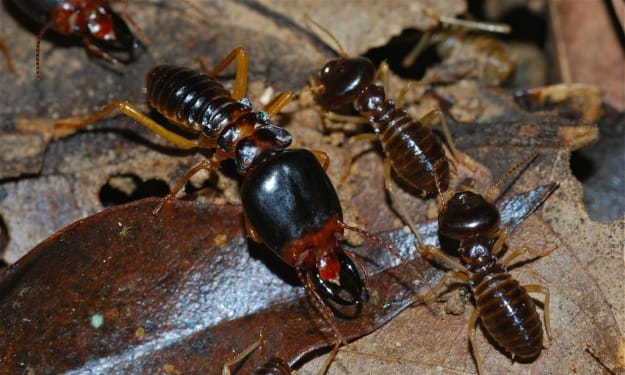Five Ways Squirrels Make It Through Winter
They are not fat, just fluffy!

I love feeding and watching squirrels and am fascinated with how they adapt to the ever changing environment. One of the questions that people wonder about these wonderful creatures is how squirrels make it through the winter.
It turns out that squirrels have at least five different mechanisms to survive the cold.
Fatten Up
Squirrels will gorge in the fall to fatten up as much as possible. Squirrels will increase in size by upwards of 30%. The increased fat layer helps to preserve warmth and serves as a caloric reserve in case they are unable to find sufficient food.
It has become common for people to post “fat shaming” pictures of squirrels on Instagram and Twitter but they don’t need to worry as all of that extra weight will be gone by spring!
Warmer Coat
Squirrels develop a thicker coat during the fall that helps keep them warmer. Some species of squirrels go the extra mile and grow extra fur on the tips of the ears! One species that grows the winter ear tufts if the Abert’s squirrel and it is super cute!
Generate and Conserve Body Heat
Squirrels use shivering as a means of generating body heat. They then do everything they can to preserve the heat within their core. While all squirrels use shivering they are not equal when it comes to conserving the generated heat.
Some grey squirrels have a genetic mutation that makes their fur completely black. Academic studies have determined that black squirrels are much better at conserving body heat than grey squirrels and probably have an evolutionary advantage in cold climates where they are better able to withstand extreme cold.
Sharing Nests
During the spring and summer when squirrels are raising babies the nest is occupied by the mother and the babies. Male squirrels are chased away from the nest as sometimes males will attack and kill the youngsters.
During the winter months the males are allowed to return to the nest so they can help share body heat.
The nests are often cavities in trees that were excavated by woodpeckers. The nests, which are also known as dens, are usually lined with dry leaves and other insulating material.
If you are worried about the squirrels in your neighborhood not having a good nesting spot then you can always put up an artificial nesting box. There are several models of squirrel houses for sale and putting one up in a backyard tree might help keep squirrels from invading your attic this winter! If you are handy with tools you can follow these plans and make a nest box yourself.
Food Caches
Squirrels will spend most of the fall gathering and storing nuts to eat during the winter. The stashing activity is different between some species of squirrels.
Grey squirrels create multiple stashes all over the place. Grey squirrels are sneaky when they are creating stashes and will often create fake stashes to fool other squirrels.While they retrieve most of the nuts during winter they always leave some behind and these buried nuts will often sprout into new trees.
In contrast, Red squirrels will make a single giant pile of nuts and pinecones and use that as a food source for the whole winter. If you ever want to hear a squirrel go berserk then try walking around the midden of a red squirrel!
Are You Worried About The Squirrels in Your Neighborhood?
If you have squirrels in your backyard and are worried about them making it through the winter then there are a few things you can do to help.
You can put up a nesting box. Make sure the box is at least 10 feet off the ground and that the entrance is facing away from prevailing weather.
You can put up a squirrel feeder. Instead of watching desperate squirrels do contortions as they break into your bird feeders you can put up a feeder specifically for them. There are a variety of feeders with some being designed to hold corn cobs while others are meant to hold peanuts and other treats.
You can provide nesting material. Place stashes of yarn, fabric and cotton that are torn into small pieces. Squirrels will often take these back to their nests to use as extra insulation!
Overall though you should be too worried about squirrels in the cold. They are pretty crafty animals that are well adapted for winter survival.






Comments
There are no comments for this story
Be the first to respond and start the conversation.